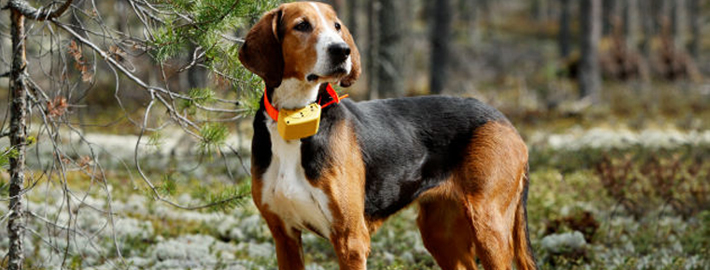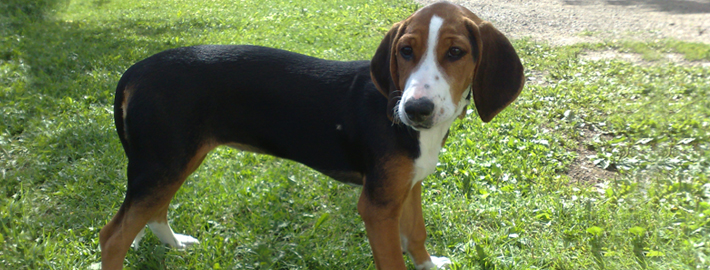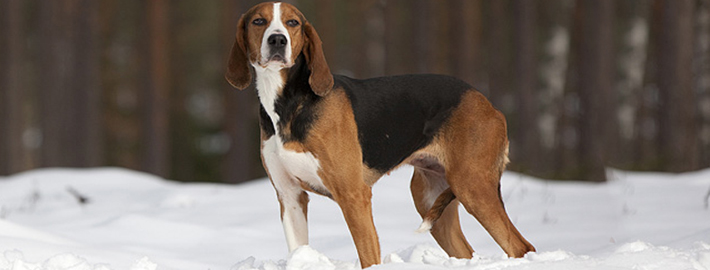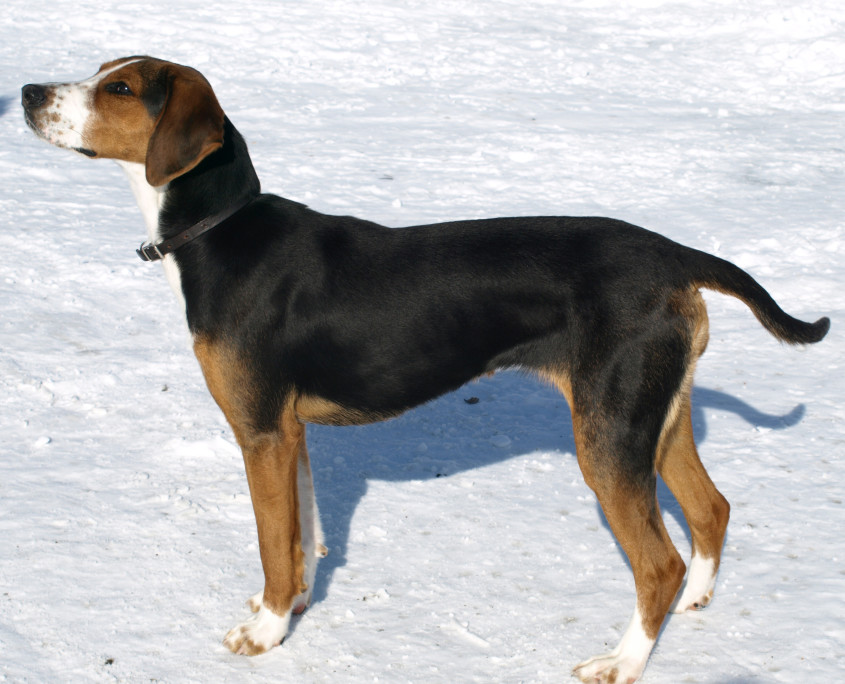What makes the Finnish Hound Unique?
Finnish Hound is a tri colored, medium sized, short coated hound that is strongly built but not heavy. Males and females should have distinctly marked sex characteristics.
Breed Groups
Page Contents
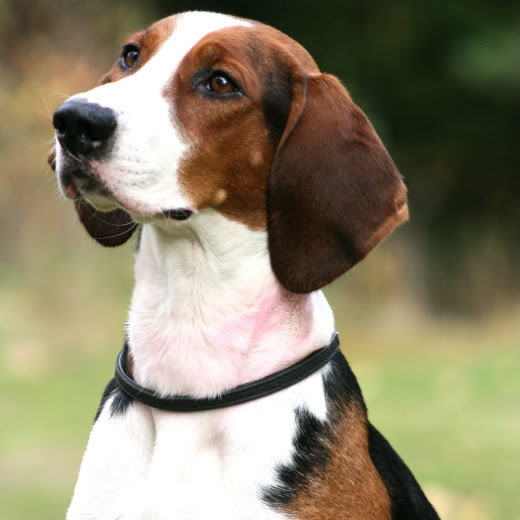
Is the Finnish Hound Right For You?
This breed is known for its calm and steady temperament, and most breed members are very stable unless on the trail when they become very excited. The Finnish Hound is known for being a very affectionate breed, often fawningly so. This is a dog that absolutely craves companionship at all times (either human or canine), and many will experience severe separation anxiety when left alone for long periods.
In 5 Words
- Passionate
- Calm
- Independent
- Friendly
- Versatile
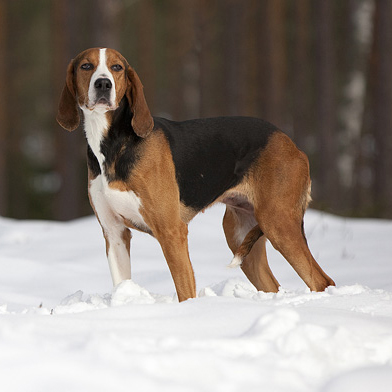
Characteristics
Learn About the Finnish Hound
Description
The head of the Finnish Hound is proportionate to the size of the dog and slightly domed. The forehead of this breed is slightly convex. The head and muzzle are distinct, but still blend in together very smoothly. The muzzle itself is quite long, at least as long as the rest of the skull, but not quite as long as is the case with many scenthounds. The muzzle is moderately deep and tapers slightly. The lips of this breed are relatively long, but should not be pendulous. The nose of the Finnish Hound is large and should always be black in color. The ears of the Finnish Hound are moderately long, but to a lesser extent than many scenthounds. The ears should hang down close to the sides of the head. The eyes of the Finnish Hound are medium-in-size and dark brown in color. The overall expression of most Finnish Hounds is calm, relaxed, and pleading. The Finnish Hound has a double coat. The breed’s undercoat is short, dense, and soft while the outer coat is medium-short to medium in length, straight, dense, and quite harsh. There is only one acceptable coloration for the Finnish Hound, tricolor. Finnish Hounds should ideally have reddish brown coats with white markings and a solid black saddle-shaped marking on their backs. This black marking tends to be much larger on the Finnish Hound than on many closely related breeds, and often extends well down the dog’s sides, legs, and neck. The white markings are most commonly found on the legs, chest, and belly. Occasionally, a Finnish Hound will be born with alternate markings, most commonly brown and white without any black. Such dogs are ineligible in the show ring and should probably not be bred, but otherwise make just as excellent companions or hunting dogs as any other breed members.
Short History of the Finnish Hound
The Finnish Hound was a result of a breeding program in the 1800s which involved French, German and Swedish hounds. The Finnish Hound has become Finland’s most popular native working breed. Although it is very popular in Finland and Sweden, it is uncommon elsewhere. Hunting season for a Finnish Hound is Sep – Feb. He is rarely exhibited.
Temperament
The Finnish Hound is friendly, calm and never aggressive. It is energetic in the hunt and is a versatile tracker. It works independently and pursues the quarry with passionate barking.
Caring for Your Finnish Hound
General Health
There is one very serious health condition which is a major concern for the Finnish Hound, cerebellar ataxia. Cerebellar ataxia is a very complex condition which is the result of brain lesions. These lesions cause the dog to be unable to coordinate its balance, gait, eye movements, and extremities. The lesions can be on either side or the brain or both, and the movement difficulties on the dog are on the same side(s) of the body as the lesion(s). Although there are many causes of cerebellar ataxia, the one responsible for the disease in the Finnish Hound is a single mutation of the gene SEL1L. No one is sure of the exact frequency of cerebellar ataxia in the Finnish Hound, but it is quite common in the breed. In fact, it is hoped that cerebellar ataxia studies on the Finnish Hound will one day lead to improved health for both other dogs and human beings. Veterinarians are already working on a genetic test which will allow Finnish Hound breeders to test their stock and hopefully eliminate the disease from the breed in the future.
Grooming & Bathing
The smooth, shorthaired coat is easy to keep in peak condition. Brush with a firm bristle brush, and dry shampoo occasionally. Bathe with mild soap only when necessary. The nails should be kept trimmed. These dogs are average shedders.
Exercise & Training
Finnish Hounds are energetic working dogs with great stamina. They need long, brisk daily walking, and plenty of running and playing free.

